#learning faroese
Text
I’ve been learning Norwegian with books and Duolingo for the last (almost) year and every time I read “helgen” I instantly think of the exact opposite of what I’m supposed to think of. Practicing Norwegian? Think of Skyrim. Playing Skyrim? Why is this town named “the weekend”? I can’t win. The wrong one is always the first to come to mind
#emma posts#Skyrim#game developers: open up a Norwegian dictionary and point to a word at random#that’s a town now#it could also be a joke or something#I don’t remember if the start of the game takes place during an in-game weekend but if it does#the town only lasted a weekend (to you)#but a weekend implies two days#maybe it’s a Swedish word or something instead#I haven’t gotten that far into Swedish and Icelandic uses a lot of different letters#they seem to have gotten rid of a lot of them on the continental Nordic countries#but I don’t know ANY danish and I have no concept of Faroese (I am so sorry if I massacred the spelling)#I don’t have a Swedish dictionary so I’d have to use google translate or something to check#Icelandic seems to have more words for things than Norwegian but I’m not really learning that language yet#my grandparents decided to try learning Icelandic first and I am like. in awe but also a bit sorry#they don’t really have a reason to learn Norwegian and Swedish though. unlike me#and apparently Icelandic is the hardest to learn. which is why I developed my fantastic learning strategy#Norwegian seems slightly easier to learn as a native English speaker than Swedish does. and Icelandic is obviously the hardest. but it’s#also closest to their shared ancestor (remember I’m talking about language) so if I start with Norwegian it will be easiest and then#with each of the other languages the next should be easier than it would be without the other two#Norwegian and Icelandic have an interesting history as related languages but that’s not important to this discussion#but… Icelandic is all the same and Norwegian and Swedish have a whole bunch of regional stuff and oh boy idk#but all I need to know for the foreseeable future is how to read and listen#I don’t need writing and speaking yet#this would be so much easier if my grandparents had not just switched to English and forgot any of the other languages they grew up with#though the Icelandic ones didn’t speak much at all compared to my dad’s parents who spoke some of theirs as kids#I could know even more languages by now if everyone hadn’t just switched to English. though I keep forgetting how to write Spanish. that’s#only half related though. since it’s the second most popular language in my country we had some classes as kids and some media that was#bilingual but not enough for me to ever be fluent. plus I freeze up any time I try conversation because I get too nervous about making#mistakes. I’m so off track in the tags though
7 notes
·
View notes
Text
#431
fun language exercise is to try to sing along to smth like old maneskin
my tongue hurts but! it generally and gradually improves my articulation? and i start to make out words!
#днявочка#eng tag#wait til see me struggling to learn danish#low-key i need it to read faroese and also i need icelandic DONT ASK......#BUT I WENT FOR IT AND WAS BLOWN AWAY AND PEOPLE SAY RUSSIAN IS HARD BC OF THE CASES AND ALL THAT CRAP#NO FRENS SEARCH OUT FAROESE GRAMMAR THAT'S THE REAL BEAST i must fight it one day and befriend it
0 notes
Text
List of interesting ressources pertaining to norse paganism, scandinavian folklore and history, and nordic religions in general
These are sources I have personally used in the context of my research, and which I've enjoyed and found useful. Please don’t mind if I missed this or that ressource, as for this post, I focused solely on my own preferences when it comes to research. I may add on to this list via reblog if other interesting sources come to my mind after this has been posted. Good luck on your research! And as always, my question box is open if you have any questions pertaining to my experiences and thoughts on paganism.
Mythology
The Viking Spirit: An Introduction to Norse Mythology and Religion
Dictionnary of Northern Mythology
The Prose and Poetic Eddas (online)
Grottasöngr: The Song of Grotti (online)
The Poetic Edda: Stories of the Norse Gods and Heroes
The Wanderer's Hávamál
The Song of Beowulf
Rauðúlfs Þáttr
The Penguin Book of Norse Myths: Gods of the Vikings (Kevin Crossley-Holland's are my favorite retellings)
Myths of the Norsemen From the Eddas and the Sagas (online) A source that's as old as the world, but still very complete and an interesting read.
The Elder Eddas of Saemung Sigfusson
Pocket Hávamál
Myths of the Pagan North: Gods of the Norsemen
Lore of the Vanir: A Brief Overview of the Vanir Gods
Anglo-Saxon and Norse Poems
Gods of the Ancient Northmen
Gods of the Ancient Northmen (online)
Two Icelandic Stories: Hreiðars Þáttr and Orms Þáttr
Two Icelandic Stories: Hreiðars Þáttr and Orms Þáttr (online)
Sagas
Two Sagas of Mythical Heroes: Hervor and Heidrek & Hrólf Kraki and His Champions (compiling the Hervarar saga ok Heiðreks and the Hrólfs saga kraka)
Icelandic Saga Database (website)
The Saga of the Jómsvíkings
The Heimskringla or the Chronicle of the Kings of Norway (online)
Stories and Ballads of the Far Past: Icelandic and Faroese
Heimskringla: History of the Kings of Norway
The Saga of the Volsungs: With the Saga of Ragnar Lothbrok
The Saga of the Volsungs (online) Interesting analysis, but this is another pretty old source.
The Story of the Volsungs (online) Morris and Magnusson translation
The Vinland Sagas
Hákon the Good's Saga (online)
History of religious practices
The Viking Way: Magic and Mind in Late Iron Age Scandinavia
Nordic Religions in the Viking Age
Agricola and Germania Tacitus' account of religion in nordic countries
Myths and Symbols in Pagan Europe: Early Scandinavian and Celtic Religions
Tacitus on Germany (online)
Scandinavia and the Viking Age
Viking Age Iceland
Landnámabók: Book of the Settlement of Iceland (online)
The Age of the Vikings
Gesta Danorum: The Danish History (Books I-IX)
The Sea Wolves: a History of the Vikings
The Viking World
Guta Lag: The Law of the Gotlanders (online)
The Pre-Christian Religions of the North This is a four-volume series I haven't read yet, but that I wish to acquire soon! It's the next research read I have planned.
Old Norse Folklore: Tradition, Innovation, and Performance in Medieval Scandinavia
Children of Ash and Elm: A History of the Vikings
The Penguin Historical Atlas of the Vikings by John Haywood
Landnámabók: Viking Settlers and Their Customs in Iceland
Nordic Tales: Folktales from Norway, Sweden, Finland, Iceland and Denmark For a little literary break from all the serious research! The stories are told in a way that can sometimes get repetitive, but it makes it easier to notice recurring patterns and themes within Scandinavian oral tradition.
Old Norse-Icelandic Literature: A Short Introduction
Saga Form, Oral Prehistory, and the Icelandic Social Context
An Early Meal: A Viking Age Cookbook and Culinary Oddyssey
Runes & Old Norse language
Uppland region runestones and their translations
Viking Language 1: Learn Old Norse, Runes, and Icelandic Sagas and Viking Language 2: The Old Norse Reader
Catalogue of the Manks Crosses with Runic Inscriptions
Old Norse - Old Icelandic: Concise Introduction to the Language of the Sagas
A Companion to Old Norse-Icelandic Literature and Culture
Nordic Runes: Understanding, Casting, and Interpreting the Ancient Viking Oracle
YouTube channels
Ocean Keltoi
Arith Härger
Old Halfdan
Jackson Crawford
Wolf the Red
Sigurboði Grétarsson
Grimfrost
(Reminder! The channel "The Wisdom of Odin", aka Jacob Toddson, is a known supporter of pseudo scientific theories and of the AFA, a folkist and white-supremacist organization, and he's been known to hold cult-like, dangerous rituals, as well as to use his UPG as truth and to ask for his followers to provide money for his building some kind of "real life viking hall", as supposedly asked to him by Óðinn himself. A source to avoid. But more on that here.)
Websites
The Troth
Norse Mythology for Smart People
Voluspa.org
Icelandic Saga Database
Skaldic Project
Life in Norway This is more of a tourist's ressources, but I find they publish loads of fascinating articles pertaining to Norway's history and its traditions.
#ressources#masterpost#heathenry#research#sources#norse paganism#norse gods#spirituality#polytheism#deity work#pagan#paganism#deities#norse polytheism#mythology#eddas#sagas
574 notes
·
View notes
Text
Random Facts About Gerardo
Bayverse!Leonardo x reader

A/N: Fun fact, I didn’t have Spanish in school, but some of my classmates did. And their teacher? Well, he was named Gerardo and was from Spain. Him and our Faroese physic teacher Petur was two of the best teachers ever… even though we couldn’t understand a word they said😂

Warnings: None💙

With your third child, you and Leo of course had to continue with your theme of Italian names. With your oldest son being named after Rome, and your second born being named “little warrior”, it only seemed fitting to name your third born “spear strength” - Gerardo.
With Gerardo being the youngest out of three for 10 years, he did gain some “youngest sibling” energy traits. Just as his very light hearted nature, a very charming personality, and an ability to get along with both of his older brothers very easily.
Gerardo getting into an argument with one of his brothers? Rarely. Actually, neither you nor Leo could remember the last time Gerardo got into an argument. You both know it has happened before, but it has been such a long time ago, that that memory has faded with time.
Out of all three boys, Gerardo is definitely the prankster. However, he keeps his pranks light hearted, like placing a fart pillow on your chair light hearted. He once replaced Leo’s katana with a foam sword, so when Leo pulled it from its saya during training with his sons, it gave everyone a good laugh. Even Leo had to laugh.
Just like his best friend and cousin, Luis, Gerardo was born with four fingers on each hand - one more than any of his brothers had. And of course, he used it to flip his brothers off almost daily. But with Luis having been born just a few weeks before Gerardo, neither you or Leo were worried about the extra fingers. It was just a sign that Luis and Gerardo would become very close.
As it was family tradition, Master Splinter gifted Gerardo a weapon when he turned 15, just like had done for all his other grandchildren. Gerardo was not just given one weapon, but two - two kodachi swords. Two short swords that bordered on the edge of being long knives. And Gerardo loved them! They were easy to carry around on his sides and easy to hide. Gerardo’s weapon dream come true!
Gerardo was 10 years old when he became a big brother, and from the moment he learned that you were pregnant, he was excited! For all of nine months he was pretty much jumping around, wanting to meet his new little sibling.
As the other founding member of The Little Brother Club, Gerardo was seen as the other little prankster of the lair. If it was a more elaborate prank that was being pulled on someone in the lair, you could be rest assured that Gerardo and Luis was hiding somewhere with Ragnar as a witness, giggling their asses off with full view of what was happening.
But with the birth of Valentina, there was a little confusion with The Little Brother Club. Gerardo, Luis and Ragnar had hoped that you would have been pregnant with a boy they could add to their club. But with the birth of a girl, they were stumped on what to do. Change the name? The Little Sibling Club or The Little Brother And Little Sister Club? No, that couldn’t work. In the most dramatic way possible, your teen year old and his cousins dismantled their little brother club. But that never stopped them from hanging out and continuing with the same activities as before. Now it was just without a club name.
#tmnt#teenage mutant ninja turtles#tmnt leonardo#tmnt leo#tmnt x reader fluff#tmnt leo x reader#tmnt leonardo x reader#tmnt bayverse#tmnt bayverse leo#tmnt bayverse leonardo#tmnt bayverse leo x reader#tmnt bayverse leonardo x reader#bayverse tmnt#bayverse tmnt x reader#bayverse leo#bayverse leonardo#bayverse leo x reader#bayverse leonardo x reader#tmnt raphael#tmnt donatello#tmnt michelangelo#tmnt raph#tmnt donnie#tmnt mikey
26 notes
·
View notes
Note
so in love languages like Spanish there some common words like “sir” which are similar in languages, (Signor in Italian and Señor in Spanish) are there like familial language cognates (forgive the phrasing) in languages like Icelandic and other Nordic languages? (Idk if Iceland is Nordic, all I know is that FINLAND NUMBER ONE 🇫🇮🇫🇮🇫🇮🇫🇮)
Oh yes, lots.
The language that's most similar to Icelandic is Faroese, and as Icelanders we can read Faroese with very little difficulty. The same doesn't apply to spoken Faroese though as pronunciation wise it is much closer to Danish.
Written Norwegian and Danish are extremely similar, with the main difference between the two being pronunciation and the fact that Norwegian has a whole bunch of dialects. Swedish is also quite similar, but as someone who mainly knows Danish out of these three I cannot read Swedish with nearly as much ease as Norwegian. (Which, considering Swedish was the second language I ever learned does make me a little bit sad)
Finnish belongs to a different language family and therefore hardly shares any similarities with the other Nordic languages. It is however very closely related to Estonian.
68 notes
·
View notes
Text
learning Dutch, Norwegian, Finnish, French, C1 level English and the alphabets of Estonian & Faroese language at THE SAME TIME is not a good idea when tomorrow is another Spanish exam ✋🏻🏳️
12 notes
·
View notes
Text
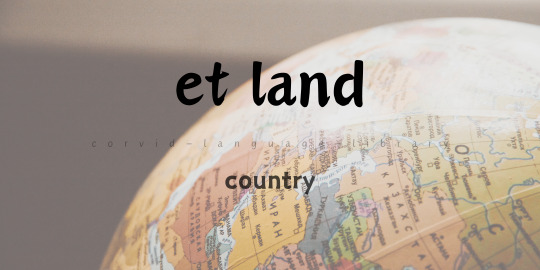
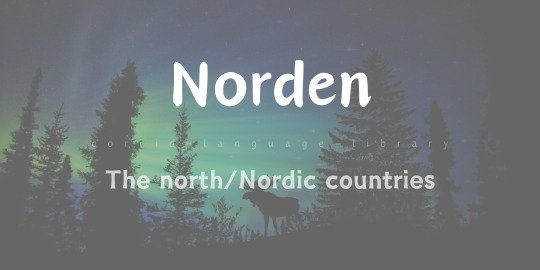


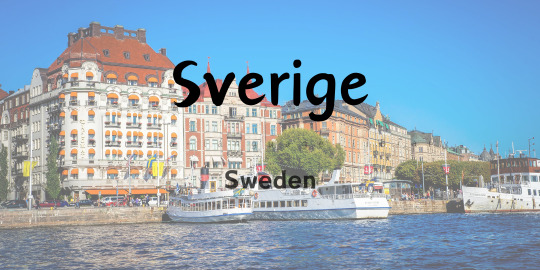

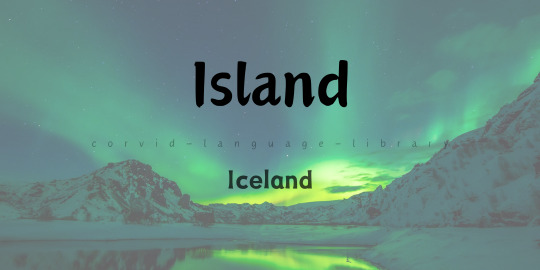

Norwegian Bokmål for Total Beginners (January 2024 Crash Course)
25. Nordic Countries
Welcome to day 25! We're doing pretty well here, huh? :D Today we're learning the names for the nordic countries!
land (n) - country
Norden - the north (specifically the nordics)
Norge - Norway
Danmark - Denmark
Sverige - Sweden
Finland - Finland
Island - Iceland
Færøyene - The Faroe Islands
Bonus
språk (n) - language
nasjonalitet (m) - nationality
Grammar: Language & Nationality
Unlike English where we can change the word of the country in any number of ways to get the language/nationality (France -> French, Germany -> German, Norway -> Norwegian, Sweden -> Swedish, China -> Chinese etc), it's pretty easy in Norwegian: it'll always end in -sk:
Norge -> norsk (Norwegian)
Sverige -> svensk (Swedish)
Danmark -> dansk (Danish)
Finland -> finsk (Finnish)
Island -> islandsk (Icelandic)
Færøyene -> færøysk (Faroese)
This pertains to both the language and the nationality:
Han er norsk. Han snakker norsk. (He's Norwegian. He speaks Norwegian)
Vi er finske. Vi snakker finsk og svensk. (We're Finnish. We speak Finnish and Swedish)
Den islandske mannen snakker islandsk og dansk. (The Icelandic man speaks Icelandic and Danish)
Er dere færøysk? Snakker dere færøysk? (Are you Faroese? Do you speak Faroese?)
Note: all countries are capitalised just like in English, but languages and nationalities aren't.
Your turn!
Here's a list of countries in alphabetical order. Find your country and tell me what languages you speak! If your country or language isn't there, you're welcome to look it up, reblog and add it (there's like 200 countries and over 7000 languages in the world so I'm not gonna list them all, sorry. I chose the countries I did because I have or have had followers of those nationalities)
I'll go first!
Jeg kommer fra Storbritannia. Jeg er britisk. Jeg bor i Japan. Jeg snakker engelsk og norsk, og jeg lærer meg japansk. (I come from the UK. I am British. I live in Japan. I speak English and Norwegian, and I'm learning Japanese)
🇬🇧->🇳🇴
Argentina/Argentinian -> Argentina/argentisk
Australia/Australian -> Australia/australsk
Austria/Austrian -> Østerrike/østerrisk
Belarus/Belarusian -> Hviterussland/hviterussisk
Belgium/Belgian -> Belgia/belgisk (Flemmish = flamsk)
Bosnia & Herzegovina/Bosnian -> Bosnia og Hercegovina/bosnisk
Brazil/Brazilian -> Brasil/brasiliansk
Bulgaria/Bulgarian -> Bulgaria/bulgarsk
Canada/Canadian -> Canada/kanadisk
China/Chinese -> Kina/kinesisk
Croatia/Croatian -> Kroatia/kroatisk
Cyprus/Cypriot -> Kypros/kypriotisk
Czechia/Czech -> Tsjekkia/tsjekkisk
Egypt/Egyptian -> Egypt/egyptisk (Arabic = arabisk)
England/English -> England/engelsk
Estonia/Estonian -> Estland/estlandsk
France/French -> Frankrike/fransk
Germany/German -> Tyskland/tysk (Yiddish = jiddisk)
Georgia/Georgian -> Georgia/georgisk
Greece/Greek -> Hellas/gresk
Greenland/Greenlandic -> Grønland/grønlandsk
Hungary/Hungarian -> Ungarn/ungarsk
India/Indian -> India/indisk
Ireland/Irish -> Irland/irsk
Israel/Israeli -> Israel/israelsk
Japan/Japanese -> Japan/japansk
Korea/Korean -> Korea/koreansk
Latvia/Latvian -> Latvia/latvisk
Lithuania/Lithuanian -> Litauen/litauisk
Mexico/Mexican -> Mexico/meksicansk
Moldova/Moldovan -> Moldova/Moldovisk
The Netherlands/Dutch -> Nederland/nederlandsk (Frisian = frisisk)
New Zealand/New Zealander -> New/Ny Zealand/new/ny zealandsk (Aotearoa = Aotearoa)
Palestine/Palestinian -> Palestina/palestinsk (Gaza = Gaza, the West Bank - Vestbredden)
The Philippines/Filipino -> Filippinene/filipinsk
Poland/Polish -> Polen/polsk
Portugal/Portuguese -> Portugal/portugisisk
Romania/Romanian -> Romania/rumensk
Russia/Russian -> Russland/russisk
Scotland/Scottish -> Skottland/skotsk (Scots = skotsk, Scottish Gaelic = skotsk-gælisk)
Serbia/Serbian -> Serbia/serbisk
Slovakia/Slovak -> Slovakia/slovakisk
Slovenia/Slovenian -> Slovenia/slovensk
South Africa/South African -> Sør-Afrika/sørafrikansk
Spain/Spanish -> Spania/spansk
Thailand/Thai -> Thailand/thailandsk
Turkey/Turkish -> Tyrkia
The UK/British -> Storbritannia/britisk
Ukraine/Ukrainian -> Ukraina/ukrainsk
The USA/American -> USA/amerikansk
Vietnam/Vietnamese -> Vietnam/vietnamsk
Wales/Welsh -> Wales/walisisk
Zimbabwe/Zimbabwean -> Zimbabwe/zimbabwisk (Shona = sjona)
#nutrcracker norsk#norwegian langblr#beginner norwegian#jan '24 beginner norwegian crash course#learning norwegian#norwegian: a1#my oc: norwegian#norwegian#norsk
5 notes
·
View notes
Note
I'm reading a rottmnt fic, y'know, like usual, when at one point Donnie call Draxum father and my mind when directly to Galois.
Now, i can't stop thinking about the amount of PTSD that your fic cause me, That i can't read others fics without thinking of yours.
But then, i remember that i did this to myself.
It actually kind of grinds my gears a bit whenever fics have the turtles call Draxum 'dad' in anything but a satirical manner. I just feel like Draxum is too old-school for that. More like 2012 Splinter vibes, where he is still unquestionably Dad but the turtles still use a more formal honorific because that's just how he raised them. And even then, it's implied that they called him Papa when they were little. Which is actually a thing in Japanese-Papa is a loanword and kids will usually start calling their dads that when they first learn to talk, (which makes sense, 'pa' is one of the first and easiest sounds a baby starts to make, along with 'ma' and 'ba', which is why names for moms and dads are so similar all over the world) and then they graduate to a more formal title once they're older. For the 2012 boys, for some reason that title was just Sensei.
I did put in one hint that Draxum told Gale that he called him Papa as a baby turt. And Gale will use it if he really wants to be manipulative, unaware that it actually has zero effect on Draxy. I actually looked up all the words for Father in Old Norse, thinking if Draxum did raise kids, he'd want them to call him what he called his own father. And the title that I found most likely, based on his place of birth and the time period I imagine he was born in, was, and I kid you not, Far. Norse kids legit called their daddies Far. Which-these were the Vikings, many of their daddies were sailing around the world for years at a time, bringing back new stepmoms and making baby siblings their whole childhoods, so that part's accurate. (I kid, Draxum's old but the Viking Age was over by the time he was born) But I felt like people would see that and be more confused than pointing and going "that's Draxum's word for dad! How cute!"
Another Old Norse word for dad was literally just dad. Which makes sense, English is also a Germanic language and took a lot from that language family. But I think something would have been lost if Splinter was Dad and I called Draxum Dad(Faroese style).
8 notes
·
View notes
Note
what languages have you learned? I know you’ve learned twelve, but which ones?
I love questions!
This is about the order I learned them in
English (old, middle, and modern)
Southern Sami
French (old, middle, and modern again)
Arabic
Russian
Icelandic
Faroese
Modern Norwegian, Swedish, and Danish (they're really similar, so I count them as one)
German
Finnish
Gaelige (Irish Gaelic)
Hebrew
Currently working on Japanese
6 notes
·
View notes
Note
So, what do you think of the association between Loki and spiders? I've seen it mentioned a few places, noting that in Icelandic, Swedish, and Faroese that variation on the word Loki are used for spiders or net-like things, but I haven't seen anything close to authoritative.
(Kinda want to learn before I tell my son, the arachnophile, the possible connection)
TLDR: I agree, based on UPG.
I definitely associate Loki with spiders. Not so much for the net imagery, despite the net being key in Loki's flight/capture. The reason I associate Loki with spiders is UPG: here is this helpful, resourceful, beautiful, skilled creature existing in the world. So many people fear it, hate it, try to kill it, without even a second thought. I see Loki as a collector of lost toys, a protector of misfits, someone who sees the beauty where others refuse to look--so to me the connection is inescapable.
I agree, there's nothing I'd call "authoritative" about it, but the good news is that doesn't necessarily matter too much. Depending on when and where you lived, the gods meant (and continue to mean) different things to different people. It's also true that our gods are multi-faceted and can also have a lot of overlap with one another. So while nets tend to remind me of Ran, if they make you think of Loki, then that's a powerful correspondence.
18 notes
·
View notes
Text
December Morning - Kim Simonsen - Faroe
Translator: Randi Ward (Faroese)
The shore is soaked;
the stones are slippery
with green algae.
I gather a handful of red whelks
from a fresh tidal pool.
I kick a limpet loose.
At first light, between seaweed
and the tides of time,
morning is set in motion:
a tipping bucket,
an opening gate,
a bygone vision of black ships
sailing upon the sea’s canopies of plankton.
The gloomy sunrise has ended
up a bright morning.
The house is quiet;
everything waits and wonders.
The flowers are all gone;
the bulbs and rhubarb are at rest.
Now that I’ve circled the sun
for the forty-fourth time, I’m learning to live here.
The lawn is dying.
A red berry on a branch dangles in the wind.
The steady roar of the waves—
the shore transformed each morning.
Kelp that swayed on the seafloor last night
is wracked up in heaps of tangled blades and dead stalks on the sand.
Birds sit on a branch.
Small brown slugs slip under drifting leaves.
Green moss colonizes a tree trunk;
yellow fungus works its way into the wounded bark.
The dead grass reaches all the way up to my knees.
To know that everything is an other world,
always an other world.
The grit of frosty leaves
sandpapers the street.
I come back in with my eyes watering from the cold.
Ice crystals sparkle from a thousand directions at once.
The sun is setting
on the children walking home;
the very tracks of their treaded soles are loved.
Heavy sleeves of wet snow hang from branches.
I haven’t seen a brown slug since last summer.
I’m trying to find my voice here.
Wishing not to grow older
is really about not wanting to lose my childhood again—
not wanting to lose anything else at all.
To stand amid the rising tide and undulating landscape
clinging to the sand, and the red and brown seaweed,
trying to take it all in and with me,
trying not to forget anything inside this crumbling house.
The wake of caving memories hits like heavy surf—
to know that everything is an other world,
always an other world.
Fingers, red and tingling.
The slug eggs scattered throughout the yard lie in wait.
The soil is black.
The withered grass is brown,
matted and stiff
with wintery glaze.
The sun lowers its cold gaze.
We wait without knowing what’s going to happen.
The house is empty during the day.
Furious squalls blow in off the bay.
Breakers rip seaweed up and sling it about the sand.
You aren’t here.
A solitary cat slinks into the fenced yard.
It will be dark again soon.
Each day ends more quickly than it begins.
Gusts send sand and blades of grass swirling against the window.
The cat has vanished.
Time etches itself in ripples and grooves
on the grey sand.
Few friendships last.
Everything is as banal as this sand.
It’s raining more and more here,
and families aren’t what they used to be.
That’s what the experts say.
The dead fish that washed ashore
is shriveling up in the sun.
The landscape is the same.
Once again, I’ve returned
with the feeling that I’m living in a time warp ���
like I’ve arrived twenty years too late or too early –
as though I’m slowly falling
all the while smiling to the passersby.
To daydream about the cold
on a December morning
and know that I’ve lost everything here—
that nothing is as I remember it,
that here the world is a blurry photograph
superimposed on another bleary image
until all faces are shattered
and distorted by time.
A starling flock lights
above red and black currant bushes.
You’re crying on the phone again.
A land is a construct
that has to be recreated each day;
this goes for the state and the nation—
but not the landscape.
We wished we could disappear in each other’s eyes.
I move through the trollish gorge
between all that was,
all that might now be,
and all that may or may not come to pass.
There’s a strength in the people who choose to live here
but also great sorrow.
I’ve turned off my iPhone.
The starlings have flown;
the berry bushes are still.
#december morning#kim simonsen#faroe islands#poem#poetry#poems from around the world#translation: Faroese
5 notes
·
View notes
Note
📷🌐📻🎁
📸 Post a selfie
i've been posting too many carefully curated photos so here's a selfie of me going outside in awful weather to try and catch an eevee in pokémon go
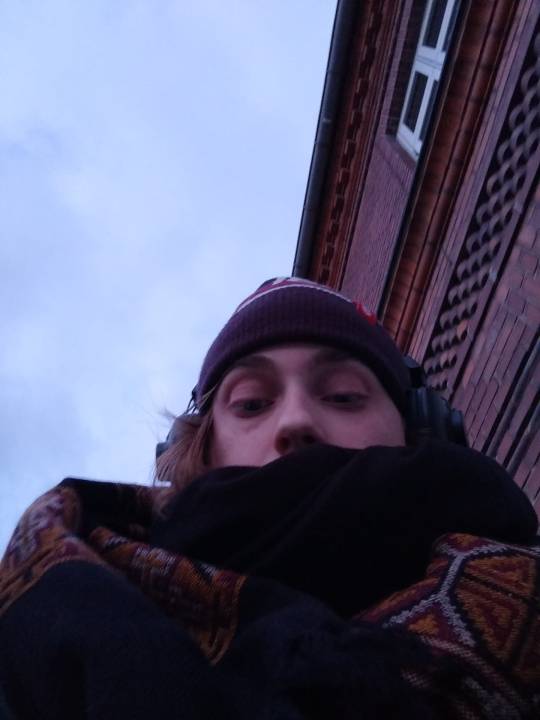
🌐 Languages you can speak and/or are learning. Which are you fluent in
Fluent in Dutch and English, conversational in Danish, can understand but not reply in German, Norwegian and Swedish. Currently learning Norrønt (old Norse) which.... makes it surprisingly tempting to actually learn modern Icelandic (but I will not). Also learning old Norwegian/Swedish/Danish this semester. I really want to learn Ukrainian, Greenlandic and Faroese, but I have to find the opportunity to dive into those.
📻 Fave song currently
Silent Running from the new Gorillaz abum. That album! Is! A! Banger!
🎁 Best gift you ever received and why
A tumblr mutual and old friend gave me a hand bound homemade book with art, quotes and photography inspired by Bruce Springsteen's 'Nebraska' and it is still the most beautiful thing I own.
And another gift I will never forget is when my best friend suddenly showed up in my house and managed to keep it a secret that she was coming to Denmark. <3
7 notes
·
View notes
Note
Ngl, given it's helped you so much, what do you recommend for starting to learn Icelandic?
In my experience the best thing to do is to try lots of different things and get as much variety in learning techniques as you can, but if you can only get yourself to do one thing, do Icelandic Online: http://icelandiconline.com/. By far it's the best all-around self-contained unit of learning Icelandic that I've ever encountered. It would definitely be better to also do other stuff but don't not use this extremely good free resource.
(longish)
(There's also Faroese Online and I'm extremely glad that exists, but I've seen some heathens decide they're going to do that as their first step toward approaching Old Norse because it's "just as close to ON." My advice is: don't do that. Just do Icelandic. Learning Faroese to learn Old Norse is a much longer path with fewer resources and also it absolutely is not as "close to Old Norse" as Icelandic, subjective though that may be -- Modern Icelandic's connection to Old Icelandic has been on government-funded life support for centuries just to keep it artificially archaic).
The thing I'm a broken record about that nobody ever listens to because they think it's easy and that anyone could just do it is: learn how to use a dictionary. Icelandic (and Old Icelandic) has complicated grammar that changes the word depending on how it's being used and in order to use a dictionary you have to be able to do that in reverse. If you see the word "skildi" in text you need to be able to know to look up "skjöldur." The Icelandic Online dictionary will make it easier for you by searching through the different word forms but if it returns multiple headwords you still have to be able to figure out which is the right one. Learn how to use https://bin.arnastofnun.is/ which is just a database of inflections; if you click "Leita að beygingarmynd" it will search all of those inflections (i.e. if you put in "skildi" it will show you "skjöldur," but again it will also show you other stuff that "skildi" could be and you'll still have to figure out which is which).
If your goal is to be good at getting information out of Old Norse texts then you really don't have to do much to get started with that and you really don't need to "know" Icelandic (lots of Norse studies scholars who have lived in Iceland for years do not speak Icelandic). I was grinding through attempts to translate rune kennings in 2011 before I started learning the language formally. You'll suck at it at first but every little bit of improvement feels like an accomplishment (which it is) and that'll keep you going. If you're reading the poetic Edda and you're like "what does this really mean?" then bust out that dictionary and get to work, it will take you like two hours to do one strophe but it doesn't matter, that'll stick with you. Find someone you can ask questions to. I can do that if you want although I don't know how reliable I'll be about small stuff. But if you translate something and it doesn't look like what some other translator says, someone who's been doing this a while might be able to explain why.
It's a good idea to consume Icelandic media. There's way more of it than you would expect for the population. Too much for me to make serious recommendations without knowing what you like. I would say to start with music because you will undoubtedly find things you want to listen to whether you understand what they're saying or not. TV or books start out as more work than pleasure which is discouraging but with music even if you give up learning the language you might find stuff to listen to anyway. If you're a heathen then Skálmöld has stuff in Icelandic about stuff you're likely interested in and will tell you how to pronounce your gods' names and stuff like that. Death metal fans hate the vocals but they were great for me when I was learning because they're very understandable for growls. There's shitloads of like neofolk and black metal stuff that I find boring but I'm told it's good by people who like that sort of stuff. Lots of good old punk. I think most Icelandic rap sucks but I'm in the minority because it's hugely popular so maybe you'll like it and if you dig around you can probably find something (I like some of this stuff). Tons of folk music of course.
I used to read the Icelandic translations of Peter Madsen's Valhalla comics (called Goðheimar in Icelandic). For TV there's a lot that you can stream for free on the state channel's website: https://www.ruv.is/sjonvarp/, for the kids' channel which tends to be easier: https://www.ruv.is/krakkaruv/. Starting with kids' media might be useful, any recent big Disney movie has Icelandic audio. When you can tolerate it do both Icelandic audio and subtitles to get your ears tuned to the language. If you're just ultimately trying to do Old Norse stuff that might not matter as much but once you can absorb audio-only input it's way easier to gets lots of it than just reading.
If you're interested in folk music and fairy tales and stuff like that then lean into it, there's tons of it, just follow whatever holds your interest and keeps you going. Once you realize there's stuff you want to know that's not likely to be translated any time soon, you just figure out what you have to do to get it, and do that over and over and slowly it gets easier.
18 notes
·
View notes
Text
Cold, Remote and Short of Women: A Portrait of Life on the Faroe Islands
— March 23, 2023 | By Oscar Holland

Aadne and Jóannes, 51-year-old twin brothers in the Faroe Islands, which has 107 men for every 100 women. "I pray to God that I will find a wife," Jóannes told photographer Andrea Gjestvang. "But maybe he doesn't hear me."Scroll through the gallery to see more images from Gjestvang's book "Atlantic Cowboy." Andrea Gjestvang/GOST Books
In her striking images of the Faroe Islands, a remote archipelago between Iceland and her native Norway, photographer Andrea Gjestvang depicts islanders and livelihoods that are as tough and unforgiving as the windswept landscape.
Fishing trawlers travel through frigid seas. Clouds roll over craggy mountains and cliffside villages. Clothes and boots are stained with the blood of slaughtered livestock and marine animals. Well-used tools hang from the walls of traditional wooden buildings.
The innate connection between Faroese people and their surroundings is woven through Gjestvang's new book about the islands, "Atlantic Cowboy." Portraits appear alongside dramatic landscape shots that reiterate the Faroes' harsh conditions and remoteness of settlements dwarfed by neighboring mountains.
"I'm not a landscape photographer but, just like when I portray people, when I photograph a landscape, I look for mood," Gjestvang said during a video interview. "I try to think about the landscape as also kind of a portrait, or something that express feelings, somehow."
Gjestvang's photos also reveal another challenging aspect of life in the Faroes, which may have been first inhabited by Irish monks in the 6th century: Her subjects are almost exclusively male.
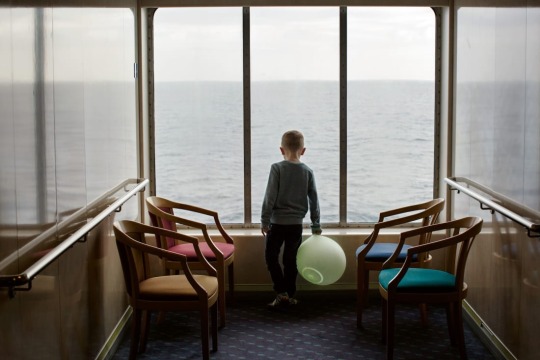
A young boy on a ferry traveling from the Faroe Islands' capital, Tórshavn, to the archipelago's southernmost island, Suduroy. Andrea Gjestvang/GOST Books
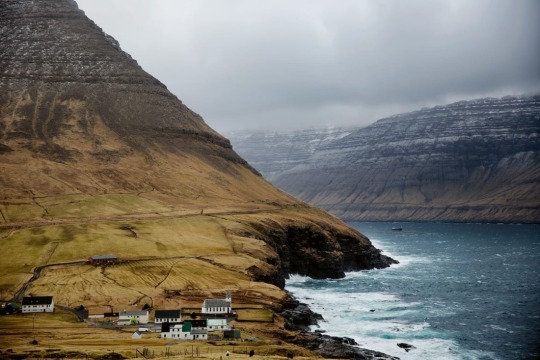
Gjestvang also captured the rugged geography of the Faroe Islands. "When I photograph a landscape, I look for mood," she said. "I try to think about the landscape as also kind of a portrait, or something that expresses feelings, somehow." Andrea Gjestvang/GOST Books
Though much of the Faroese economy revolves around physically demanding jobs traditionally taken by men — the islands' fishing industry alone employs 15% of the workforce. Visiting several times annually over the course of six years, Gjestvang trained her lens on the lives and communities of the islands' unmarried men. They are shown plucking seabirds' feathers, tending to goats or hauling the carcasses of a slaughtered pilot whales to shore. (Whale meat was once an important part of the Faroese diet, though the nation's controversial whale and dolphin hunts now spark global outrage.)
Young women, meanwhile, often choose to study or work in Copenhagen (the Faroe Islands are part of the Kingdom of Denmark) or elsewhere in Europe. Many never return, Gjestvang learned. According to World Bank data, just 48.2% of the self-governing nation's population in 2021 was female, putting it among the most gender-imbalanced places in Europe. This equates to over 107 men for every 100 women, or a deficit of roughly 2,000 females.

Faroe Islander Fróði rests on the carcass of a pilot whale after a "grindadráp," or whale hunt, a controversial tradition that often sparks global outrage. Andrea Gjestvang/GOST Books

Rogni and Odin, aged 26 and 25 respectively, are among only a handful of people living in Mykines, the Faroes' westernmost island. Andrea Gjestvang/GOST Books
This number may not seem huge, but with the 17 inhabited islands only home to around 53,000 people — and the gender gap more pronounced among younger adults — it poses significant societal implications. Faroese Prime Minister Aksel V. Johannesen said "skewed gender demographics" were among his government's "greatest challenges" upon first taking office in 2015.
For Gjestvang, this dynamic offered an "an interesting opportunity to do a project on men," she said. "As a female photographer, I get commissioned a lot to do women's health stories, and women's issues — which are very important — but I was curious to turn my camera in a different direction."

A carpentry workshop in the capital Tórshavn. Andrea Gjestvang/GOST Books

Faroe Islander Hjalmar is pictured while slaughtering sheep on a farm in the village of Kaldbaksbotnur. Andrea Gjestvang/GOST Books
Evolving Masculinity
Economic prospects for Faroese women now look rosier than in the 1990s, when thousands of people left the amid an economic collapse caused, in part, by shrinking fish stocks. Boosted by a growing tourism and service sectors, the GDP per capita has tripled since 2000 and is now on par with that of the United States.
The nation's government has in recent years invested in gender equality and employment initiatives in the hope of making the islands more appealing to women. "They have tried to make it slightly easier to be a single mother," Gjestvang added, citing expanded offerings at the capital's university and increased acceptance of remote working due to the Covid-19 pandemic.
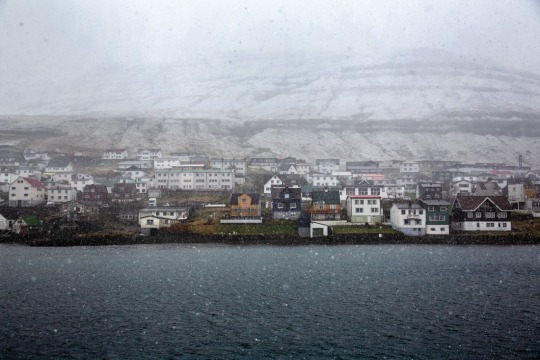
The Faroe Islands' second-largest town, Klaksvík. Andrea Gjestvang/GOST Books

One of Gjestvang's subjects, 54-year-old Andrias, is pictured with his kitten outside his home in Vidareidi. He studied in Denmark before returning to the Faroe Islands and buying a boat. Andrea Gjestvang/GOST Books
The photographer said the lack of women was not evident in the Faroese capital, Tórshavn, though it became "quite visible" when traveling to smaller villages. The social lives of these coastal communities often revolve around harbors, and she spent time visiting the informal meeting places where men "hang out, have beers and talk."
But Gjestvang's sensitive portraits also offer a candid snapshot of men in their own homes. Several are captured sitting or lying alone on sofas, while others are pictured with pets or female relatives. In accompanying interviews, some of which in her book, her subjects opened up about the realities of life in a male-dominated society. "I pray to God that I will find a wife," one unmarried man told her. "But maybe he doesn't hear me."
The photographer believes, however, that most of the men she documented were not lonely — thanks, in part, to the close-knit nature of Faroese families. As one 40-year-old told her: "Strong family ties become a substitute. I already have a family myself, even though I don't have a wife and children. When you have an extended, close-knit family, you have the freedom to be yourself and find peace with that."
"One man I interviewed told me that the Faroe Islands is the perfect playground for men," the photographer added, explaining her book's title. ("Atlantic Cowboy" is a term borrowed from a 1997 book of the same name and later used by Firouz Gaini, a professor of anthropology at the University of the Faroe Islands who has studied the nation's gender dynamics and wrote a foreword for Gjestvang.)
"It's a place where you can and fish and be outdoors and the freedom is endless, somehow," Gjestvang said.
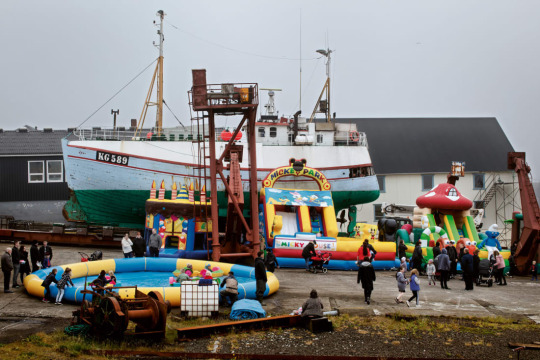
A temporary amusement park in the town of Vágur. Andrea Gjestvang/Andrea Gjestvang
Decades of lop-sided demographics have meanwhile contributed to a national identity that continues to celebrate virtues of strength and fortitude, the photographer added.
"To be strong, and to provide for yourself and your family has been an important value," she said. "The idea of the strong man is very present, and you can see it ... This kind of masculinity has gained a lot of respect, and has been sought-after.
"I think this has, of course, affected society, even though I will say that Faroese women are also very strong — they are tough, too."
2 notes
·
View notes
Text
The world of fantasy creatures has always been a source of fascination and intrigue for many people. From dragons and unicorns to mermaids and werewolves, these mythical beings have captured our imagination and sparked our curiosity. Among these creatures, one that has recently gained attention is the Selkie - a creature from Irish, Scottish, and Faroese folklore with the ability to transform from seal to human and back again.
But what does the alphabet have to do with these mystical beings? It may seem like a strange connection, but for some, astronomy and alphabets are intricately linked to the world of Selkies.
According to legend, Selkies were originally fish-like creatures that learned to transform into humans by shedding their skins. These enchanted beings are said to possess a deep understanding of the natural world and the mysteries of the universe. Many people believe that this knowledge is passed down through an ancient alphabet that is still used by Selkies today.
Unlike the modern alphabet we use, the Selkie alphabet is made up of unique symbols and characters that are believed to have a connection to the stars. Each symbol represents a specific celestial body or event, such as a star, constellation, or planetary alignment. By studying these symbols, Selkies are said to gain a deeper understanding of the natural world and their place within it.
But why is astronomy important to Selkies? Some believe that Selkies have a special connection to the stars and are able to use this knowledge to navigate the seas and communicate with other creatures. Others believe that it is a way for Selkies to pass down their history and traditions through the generations.
The Selkie alphabet has also been linked to the art of storytelling. In many cultures, storytelling plays a crucial role in preserving history and passing down cultural traditions. In Selkie culture, their alphabet is also used to tell stories through intricate symbols and characters, creating a unique and beautiful form of communication.
Despite being a fantasy creature, the Selkies' fascination with the stars and the use of an ancient alphabet highlight the significance of astronomy and the study of the natural world. It shows the importance of understanding our place in the universe and how we can learn from the mysteries of the stars.
So, while the Selkie alphabet may seem like a tangled web of symbols and characters, it is a vital part of their culture and a reminder of the deep connection between astronomy and the world of fantasy. Next time you gaze up at the stars, remember that there may be Selkies, using their incredible knowledge to guide them through the vastness of the ocean.
0 notes
Text
Beyond the Ordinary: A Journey Through Lesser-Known Travel Treasures
In an age where popular tourist spots are increasingly crowded, the allure of exploring lesser-known destinations grows stronger. These hidden corners of the world offer tranquility away from the masses and a chance to experience unspoiled beauty and unique cultures. This comprehensive guide will take you through some of the world's most underrated yet captivating travel destinations.
The Azores, Portugal
Far in the North Atlantic, the Azores are a cluster of nine islands, each with unique charm. São Miguel, known as the "Green Island," is a haven of geothermal wonders and lush landscapes. Terceira boasts a rich history, evident in its colorful old town, Angra do Heroísmo. For adventure seekers, Pico's mountainous terrain offers exhilarating climbing and hiking opportunities.
Luang Prabang, Laos
This ancient city in Laos, a UNESCO World Heritage Site, blends traditional Lao wooden houses and European colonial architecture. Visitors can experience spiritual awakening by participating in the morning alms-giving ritual with Buddhist monks, exploring the royal palace, and enjoying the tranquility of the Mekong River.
The Faroe Islands, Denmark
Situated between Iceland and Norway, the Faroe Islands are a group of 18 volcanic islands characterized by cliffs, tall mountains, and narrow fjords. The islands are a birdwatcher's paradise, home to puffins and other sea birds. The unique Faroese culture, with its language and traditions, adds to the charm of this remote destination.
Salta, Argentina
Salta, in Argentina's northwest, is a region of diverse landscapes, from the high-altitude vineyards of Cafayate to the salt flats of Salinas Grandes. Salta offers a well-preserved colonial center, vibrant local markets, and a rich culinary scene. The nearby Quebrada de Humahuaca, a UNESCO World Heritage Site, is a valley with stunning multicolored rock formations.
The Gobi Desert, Mongolia
The Gobi Desert in Mongolia is a vast and varied landscape offering more than dunes. Visitors can explore the dramatic "singing" dunes of Khongoryn Els, visit ancient monasteries, and discover dinosaur fossils at the Flaming Cliffs. Staying with nomadic families in traditional gers provides a glimpse into a way of life unchanged for centuries.
Raja Ampat, Indonesia
Raja Ampat, located in the Coral Triangle, is renowned for its incredible underwater biodiversity. It's a diver's paradise, with vibrant coral reefs, manta rays, and many fish species. Above water, the islands are just as stunning, with lush rainforests, hidden lagoons, and picturesque beaches.
The Scottish Highlands
The Scottish Highlands are a land of myths and legends, with stunning landscapes that include Ben Nevis, the UK's highest mountain, and the mysterious Loch Ness. The region's rich history is reflected in its castles and battlefields, while its cultural heritage can be experienced through Gaelic language and music.
Bhutan
Nestled in the Himalayas, Bhutan is a Buddhist kingdom that measures its success by Gross National Happiness rather than GDP. Trekking in Bhutan offers breathtaking views and the opportunity to visit remote monasteries like the iconic Paro Taktsang (Tiger's Nest). The country's commitment to conservation and sustainable tourism makes it a unique destination for eco-conscious travelers.
The Omo Valley, Ethiopia
The Omo Valley in southern Ethiopia is one of the most culturally diverse regions in the world. Home to several indigenous tribes, each with its distinct language, dress, and customs, the valley offers a unique opportunity to learn about traditional ways of life. Visitors can witness vibrant tribal markets, traditional dances, and ritual ceremonies.
The Kimberly, Australia
The Kimberly is a vast wilderness area in northern Western Australia known for its rugged ranges, dramatic gorges, and ancient Aboriginal rock art. The Bungle Bungle Range in Purnululu National Park, with its distinctive beehive-shaped towers, is a highlight, as is cruising the wild Kimberley coast.
Venturing off the beaten path to explore these lesser-known destinations promises adventure and discovery and the opportunity to engage more deeply with our world. These hidden gems with unique character and charm await those willing to step beyond the familiar and embrace the extraordinary. Whether you're seeking solitude, cultural immersion, or natural wonders, these destinations offer enriching and unforgettable experiences.
0 notes